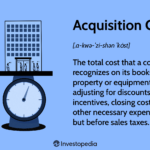What Is Attrition in Business?
The term attrition refers to a gradual but deliberate reduction in staff numbers that occurs as employees leave a company and are not replaced.
It is commonly used to describe the downsizing of a firm’s employee pool by human resources (HR) professionals. In this case, downsizing is voluntary, where employees either resign or retire and aren’t replaced by the company.
Key Takeaways
- Attrition occurs when the workforce dwindles at a company as people leave and are not replaced.
- Attrition is often called a hiring freeze and is seen as a less disruptive way to trim the workforce and reduce payroll than layoffs.
- Attrition can also refer to the reduction of a customer base, often as a result of customers moving on and fewer new customers opting in.
- Attrition due to voluntary employee departures is different from layoffs, which occur when a company lets people go without replacing them.
- Turnover occurs when people leave their jobs voluntarily or involuntarily within a short span of time and are replaced with new talent.
Understanding Attrition
Employee attrition refers to the deliberate downsizing of a company’s workforce. Downsizing happens when employees resign or retire. This type of reduction in staff is called a hiring freeze. It is one way a company can decrease labor costs without the disruption of layoffs.
There are a number of reasons why employee attrition takes place. They include:
- Unsatisfactory pay and/or benefits
- Lack of opportunity
- Poor workplace conditions
- Poor work-life balance
- Illness and death
- Retirement
- Relocation
Companies may want to consider increasing training, opening dialogue with employees, and increasing benefits and other perks to help decrease attrition.
Types of Attrition
Voluntary Attrition
Voluntary attrition occurs when employees leave a company of their own volition. Employees leaving voluntarily may indicate that there are problems at the company. Or, it may mean that people have personal reasons for departing that are unrelated to the business.
For example, some employees voluntarily leave when they get a new job elsewhere. They may be moving to a new area which makes the commute impossible. They might have decided to try a different career and therefore need a different type of job.
Voluntary attrition can also occur when employees retire. This is also referred to as natural attrition. Unless a company experiences an unusually high rate of early retirements, employees retiring shouldn’t be a cause for concern for management.
Involuntary Attrition
Involuntary attrition occurs when the business dismisses employees. This can happen because of an employee’s poor or disruptive performance. Dismissal might be tied to an employee’s misconduct.
Companies may have to eliminate an employee’s position. Or, they might have to lay off employees due to worrisome economic conditions.
Internal Attrition
Internal attrition refers to movement out of one department or division and into another. The employee isn’t leaving the company. They’re simply making a move within it.
For instance, internal attrition can occur when an employee gets promoted to a different management level. Or, they move laterally to a different section because a job there was more suitable.
Internal attrition can signal that a company offers good opportunities for career growth. On the other hand, if one department has a high internal attrition rate, it may be experiencing problems. The company should investigate and address them, if need be.
Demographic-Related Attrition
Demographic-related attrition results when people identified with certain demographic groups depart a company unexpectedly and quickly. These could be women, ethnic minorities, veterans, older employees, or those with disabilities.
Such an exodus could mean that employees have encountered some form of harassment or discrimination. That should be of concern to all companies because such behavior can undermine a positive workplace environment and successful business operations.
Action should be taken quickly to understand what caused such departures. Rectifying demographic-related attrition is a must because inclusion should be a top goal of every company. Plus, a company can put a halt to the loss of employees of great value and promise. Diversity training can help.
Customer Attrition
While not related to employee attrition, it’s important that a business also be aware of customer attrition.
Customer attrition happens when a company’s customer base begins to shrink. The rate of customer attrition is sometimes referred to as the churn rate. Customer attrition can mean that a company is in trouble and could suffer a loss of revenue.
Customer attrition can take place for a variety of reasons:
- Loyal customers switch their preference to products of another company
- Aging customers aren’t being replaced by younger ones
- Bad customer service
- Changes in product lines
- Failure to update product lines
- Poor product quality
In June 2022, 4.2 million U.S. employees voluntarily left their jobs.
Benefits of Attrition
Attrition has its positive aspects. By its simplest definition, it’s a natural diminishing of the workforce. This can be welcome when the economy is in bad shape or a recession looms and, if not for attrition, a company would face the prospect of having to lay off employees (when it doesn’t want to lose them).
Here are other times when attrition might help:
- If one company acquires another and must deal with redundancies.
- If a company redirects its vision toward a new goal and must restructure or reduce the workforce.
- When new employees are needed to refresh a workplace environment with new ideas and new energy.
- When a company seeks natural opportunities to better diversify a department or division.
- When employees with poor attitudes or performance should be removed to improve workplace culture, reduce costs, or make room for new hires who are a great fit.
The Attrition Rate
The attrition rate is the rate at which people leave a company during a particular period of time. It’s useful for a business to track attrition rates over time so it can see whether departures are increasing or decreasing. A change in the attrition rate can alert management to potential problems within the company that may be causing employee departures.
The formula for the attrition rate is:
Attrition rate = number of departures/average number of employees1 x 100
Say that 25 employees left ABC Company last year. In addition, the company had an average of 250 employees for the year ((200 + 300)/2).
With those figures, you can now calculate the attrition rate:
Attrition rate = 25/250 x 100
Attrition rate = 0.1 x 100
Attrition rate = 10%
1 To calculate the average number of employees, add the number that existed at the beginning of the time period to the number that existed at the end of the time period. Then, divide by two.
Why It’s Important to Measure Attrition
By measuring attrition rates, a company may pinpoint problems that are causing voluntary attrition. That’s important because the costs associated with losing valuable employees whom you’d like to retain can be staggering.
For example, the cost to hire and train a new employee when one employee voluntarily departs can be one-half to two times that employee’s annual salary.
Company profits can be affected negatively when knowledgeable, experienced employees leave and productivity suffers.
Loss of customers can go hand in hand with loss of valued employees. That can mean another hit to profits tied to former employees who understood company products and services, and how to sell them.
Attrition vs. Layoffs
Sometimes, employees choose to leave an existing job to take a new one or because they’re retiring. An attrition policy takes advantage of such voluntary departures to reduce overall staff.
Laying off employees doesn’t involve a voluntary action on the part of the employee. However, layoffs do result in attrition when a company doesn’t immediately hire as many new employees as it laid off.
Layoffs occur when a company is faced with a financial crisis and must cut its workforce to stay afloat.
Sometimes, due to changes in company structure or a merger, certain departments are trimmed or eliminated. Rather than relying on natural attrition associated with voluntary employee departures, this usually requires layoffs.
Attrition vs. Turnover
Turnover takes place in a company’s workforce when people leave their job and are replaced by new employees. In such instances, there is no attrition.
Employee turnover is generally counted within a one-year period. This loss of talent occurs in a company for many reasons. As with voluntary attrition, employees may retire, relocate, find a better job, or change their career.
Companies can study turnover to make needed changes. For instance, many employees leaving within a short period of time probably signals issues within a company that must be dealt with.
Just as with voluntary attrition, management can use turnover information to initiate changes that will make the company a more amenable place for new and existing employees.
How Does Employee Attrition Differ From Customer Attrition?
Employee attrition refers to a decrease in the number of employees working for a company that occurs when employees leave and aren’t replaced. Customer attrition, on the other hand, refers to a shrinking customer base.
Is Employee Attrition Good or Bad?
The loss of employees can be a problem for corporations because it can mean the reduction of valued talent in the workforce. However, it can also be a good thing. Attrition can force a firm to identify the issues that may be causing it. It also allows companies to cut down labor costs as employees leave by choice and they’re not replaced. Eventually, it can lead to the hiring of new employees with fresh ideas and energy.
How Can I Stop Customer Attrition?
You can prevent customer attrition by making sure that your company offers the products and services that your customers want, provides them with excellent customer service, stays current with market trends, and addresses any problems that arise as a result of customer complaints.
The Bottom Line
Attrition refers to the gradual but deliberate reduction in staff that occurs as employees leave a company and aren’t replaced.
Employees may leave voluntarily or involuntarily. Or, they may simply move from one department to another. In that case, attrition occurs when the former department doesn’t replace the employee. Employees may also leave for reasons of discrimination.
Calculating and tracking attrition rates can be useful to companies. High attrition rates indicate more people are leaving. They can signal that some problem is causing these departures and must be dealt with to improve the working environment.
Of course, a certain level of attrition can be helpful because it can avoid the need for layoffs in difficult economic times.



